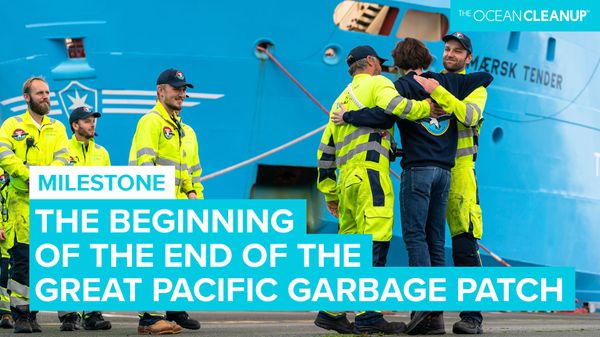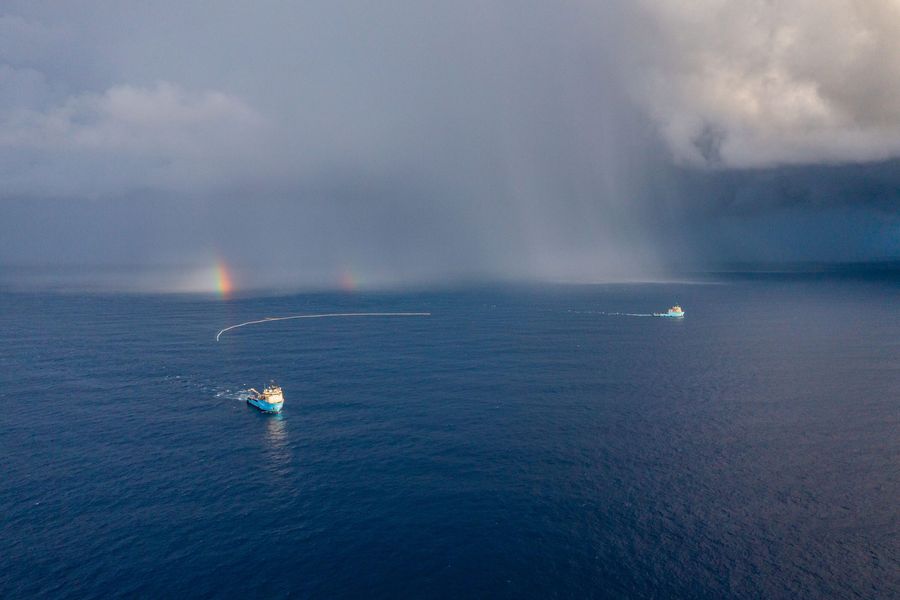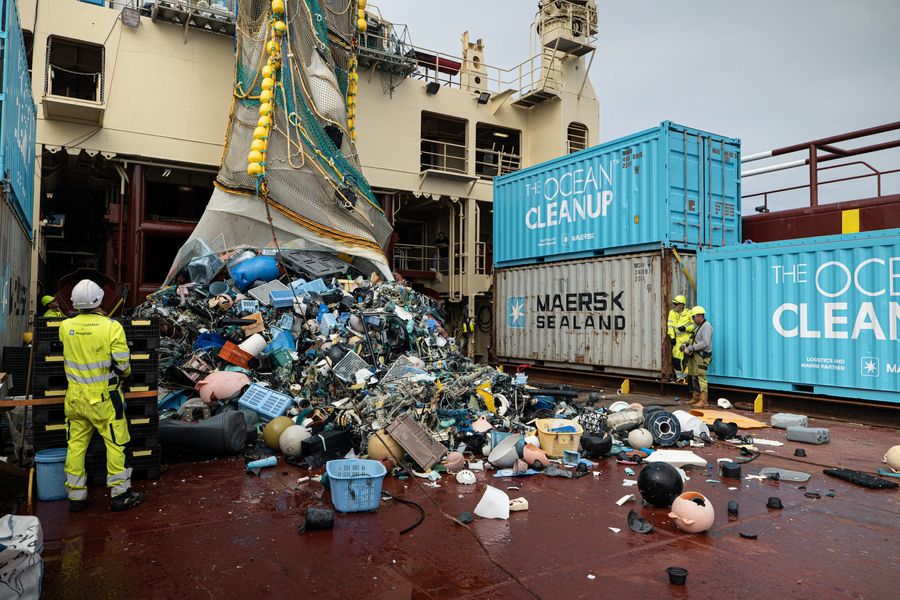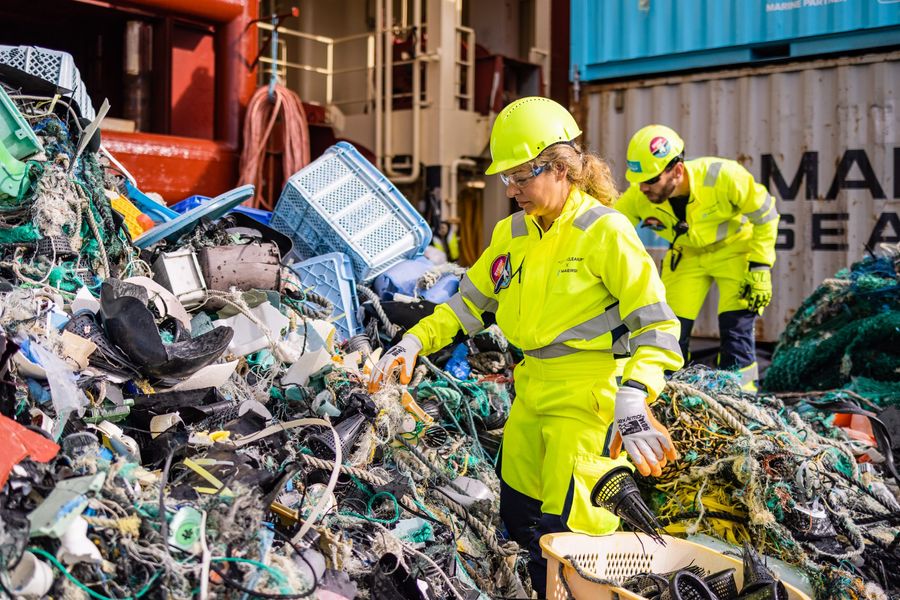
Successful System 002 Trial Validates Our Technology and Launches Ongoing Great Pacific Garbage Patch Cleanup Operations
Back to updatesAt the end of July 2021, we revisited the Great Pacific Garbage Patch (GPGP) to trial System 002, our first large-scale ocean cleanup system. On October 20, having completed a 12-week test campaign in the Pacific Ocean, the crew returned to port in Canada. Operation of System 002, also known as “Jenny,” was deemed a success, having realized:
-
Continued and significant levels of ocean plastic extraction
-
Limited negative environmental impact
-
No safety issues during operation
During three months at sea, the team completed nine trash extractions, removing 28,659 kilograms (63,182 pounds) of plastic – of which 9,014 kilograms (19,872 pounds) was removed in a single haul. To mark the achievement, a live-streamed press conference – hosted by Boyan Slat and Henk van Dalen, our Director Ocean – was held at the cruise terminal in Victoria Harbour.

START OF SYSTEM 03 DESIGN AND RETURN TO THE GREAT PACIFIC GARBAGE PATCH
Having ended our test-and-validate phase, the Ocean team is now shifting its attention to two sizable tasks: initiating the design and build of our next generation solution, System 03, along with the commencement of ongoing cleanup campaigns for System 002 in the GPGP.
Our engineering team has begun the development of System 03. This buoyant debris containment solution will be approximately 2.5 kilometers (1.5 miles) in length. Its debris retention zone will be more than three times the size of the System 002 retention zone. Since we follow an iterative process, the System 03 design will build upon insight gained during prior and ongoing operation of System 002 in the Pacific Ocean. This newest model will also serve as a blueprint for our future full-scale fleet which is planned for deployment to global cleanup venues.
Concurrent with System 03 design work on land, our offshore crew is now shifting to sustained cleanup operations in the GPGP. “Jenny” has departed port once again, to resume multi-month cleanup campaigns; we anticipate collecting approximately 22,000 to 33,000 pounds of waste per week. “Jenny” will sustain operations in the GPGP until we launch System 03. Both the creation of a new and larger system, along with advancing to ongoing cleanup efforts, bring us steps closer toward reaching our objective of reducing the size of the Great Pacific Garbage Patch.
ON A MISSION
Our mission is to develop and scale technologies that rid the world’s oceans of plastic. We do this by taking a two-pronged approach: remove what has accumulated in oceans, and simultaneously stem the flow of floating plastic in rivers. Why work in rivers? Rivers are conduits – our research shows that almost 80% of plastic that reaches the ocean comes from only 1,000 (or 1%) of all rivers in the world.
For our cleanup in oceans, we rely on System 002, our latest iteration and the first large-scale edition of our ocean system. For cleanup in rivers, we take a customized approach. Each river intervention presents a unique set of challenges, as no two waterways are the same. To address varying conditions, we are building a toolkit of Interceptor solutions. Our first product, the Interceptor Original, is a 100% solar-powered platform that autonomously traps and extracts floating debris. Plastic and debris travel down the outstretched Interceptor Barrier, where it is eventually directed onto a conveyor belt that transfers the catch to onboard trash bins. Meanwhile, the Interceptor Barrier and Interceptor Tender are new additions to our river toolkit.





